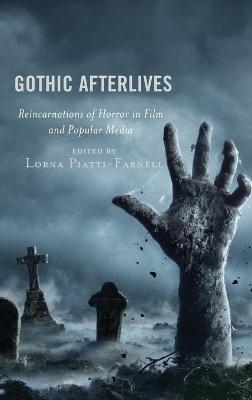
Gothic Afterlives
Lexington Books (Verlag)
978-1-4985-7822-6 (ISBN)
Gothic Afterlives examines the intersecting dimensions of contemporary Gothic horror and remakes scholarship, bringing together innovative perspectives from different areas of study. The research compiled in this collection covers a wide range of examples, including not only literature but also film, television, video games, and digital media remakes. Gothic Afterlives signals the cultural and conceptual impact of Gothic horror on transmedia production, with a focus on reimagining and remaking. While diverse in content and approach, all chapters pivot on two important points: first, they reflect some of the core preoccupations of Gothic horror by subverting cultural and social certainties about notions such as the body, technology, consumption, human nature, digitalization, scientific experimentation, national identity, memory, and gender and by challenging the boundaries between human and inhuman, self and Other, and good and evil. Second, and perhaps most important, all chapters in the collection collectively show what happens when well-known Gothic horror narratives are adapted and remade into different contexts, highlighting the implications of the mode-shifting registers, platforms, and chronologies in the process. As a collection, Gothic Afterlives hones in on contemporary sociocultural experiences and identities as they appear in contemporary popular culture and in the stories told and retold in the twenty-first century.
Lorna Piatti-Farnell is director of the Popular Culture Research Centre at Auckland University of Technology, New Zealand.
Introduction
Part I: Reincarnations and (Re)imaginings
Chapter One: Beyond the Barricades: Restaging the Siege Narrative in post-Romero Zombie Film and TV
Chapter Two: The Afterlives of Alice: Reanimating the Gothic Heroine in the Resident Evil Franchise
Chapter Three: Evil, Reborn: Remaking Disney and the Villain Intertext
Chapter Four: Untold Draculas: Textual Estrangement, Cinematic Reincarnation, and the Popular Dracula Legend
Chapter Five: “Most of you are wondering who the heck I am”: Carmilla (2014-2016, online) as Digital Reimagining of LeFanu’s “Carmilla”
Part II: Legacies, Dualities, and Hauntings
Chapter Six: Remaking Olimpia: Agency and the Gothic Afterlives of ‘Female’ Automata
Chapter Seven: Ann Radcliffe’s Legacy and Del Toro’s Crimson Peak (2015)
Chapter Eight: Unmade and Remade: Trauma and Modern Adaptations of Frankenstein
Chapter Nine: Dealing with Dualities: Modern Adaptations of Dr Jekyll and Mr Hyde
Part III: (Re)turns and Re(possessions)
Chapter Ten: Remaking Stephen King: Texts and Contexts
Chapter Eleven: Stranger Things: Remixing Eighties Horror as Posthuman Gothic
Chapter Twelve: Mexican Gothic Remakes: Carlos Enrique Taboada’s Films, Possessions, and Double Loops
Chapter Thirteen: Tangled Hair and Broken Bodies: Remaking Women and Technology in Japanese Gothic Horror Tradition from The Tale of Genji to Ringu
Chapter Fourteen: “Don’t Fuck with the Original:” Final Girl Impact on the Twenty-First Century Horror Film Industry
| Erscheinungsdatum | 10.05.2021 |
|---|---|
| Reihe/Serie | Remakes, Reboots, and Adaptations |
| Co-Autor | Stacey Abbott, Simon Bacon, Simon Brown, Matthew Crofts |
| Verlagsort | Lanham, MD |
| Sprache | englisch |
| Maße | 159 x 238 mm |
| Gewicht | 540 g |
| Themenwelt | Kunst / Musik / Theater ► Film / TV |
| Geisteswissenschaften ► Sprach- / Literaturwissenschaft ► Anglistik / Amerikanistik | |
| Geisteswissenschaften ► Sprach- / Literaturwissenschaft ► Literaturwissenschaft | |
| ISBN-10 | 1-4985-7822-5 / 1498578225 |
| ISBN-13 | 978-1-4985-7822-6 / 9781498578226 |
| Zustand | Neuware |
| Haben Sie eine Frage zum Produkt? |
aus dem Bereich


